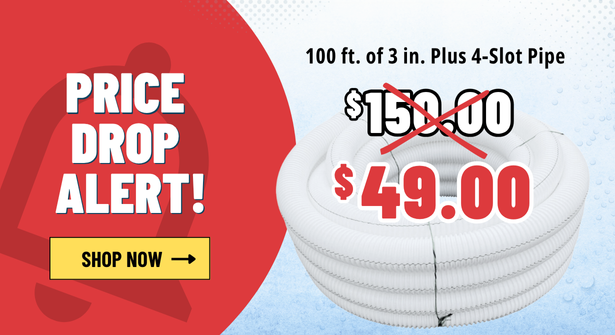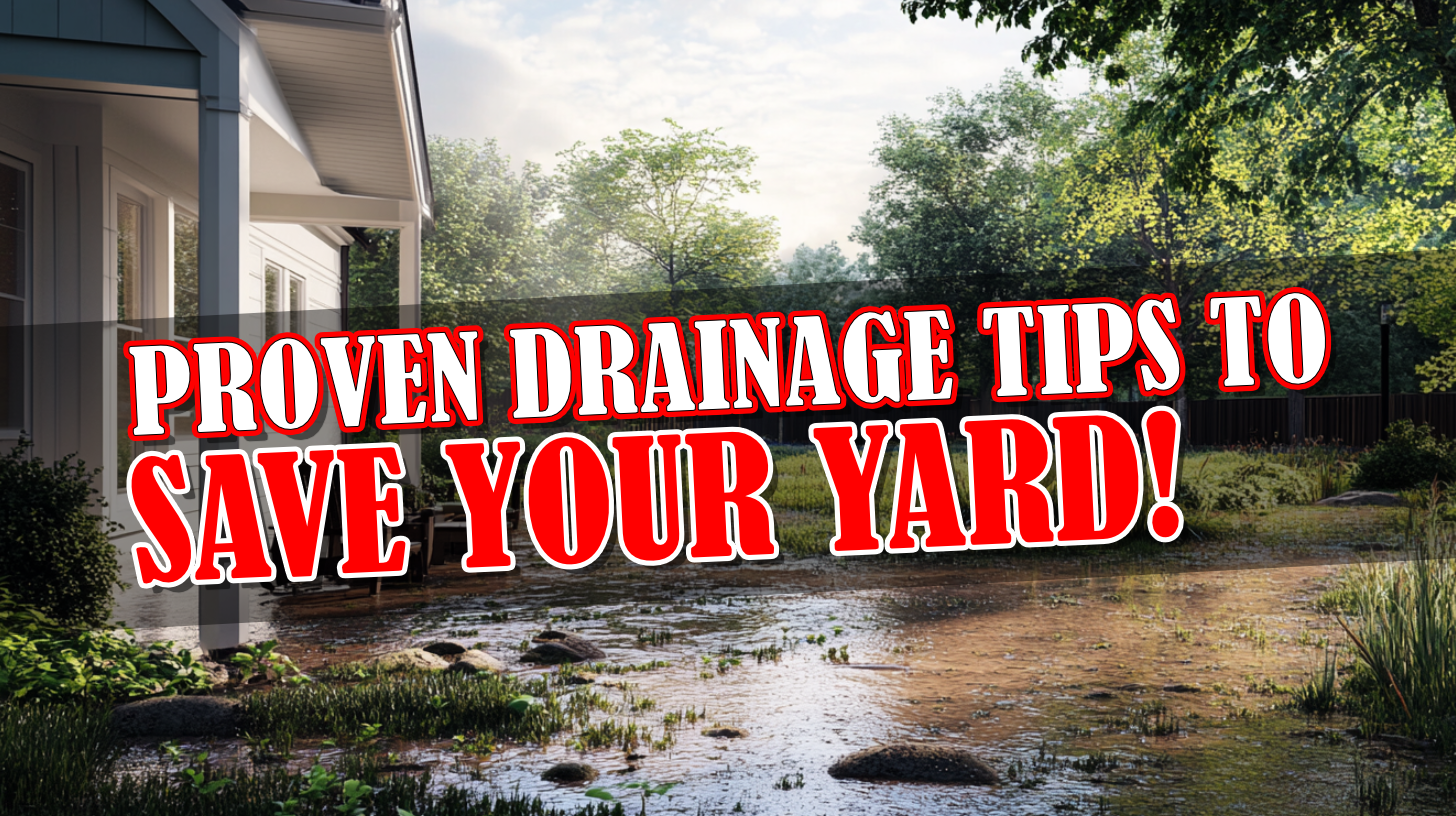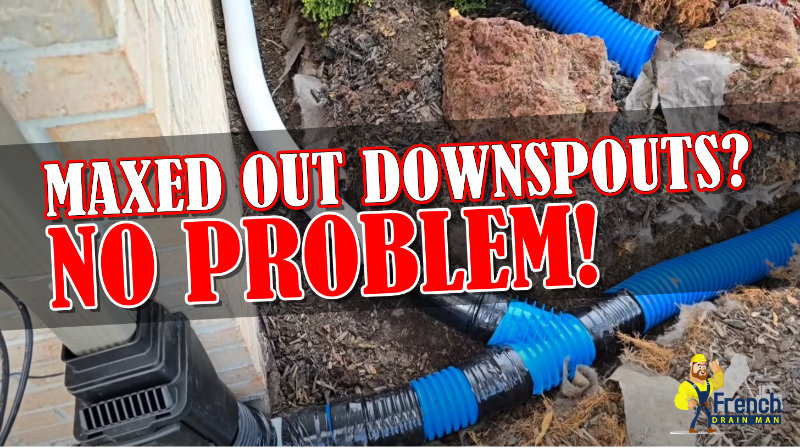Why corrugated pipe is better than PVC pipe for yard drainage
 Anybody that tells you that yard drains are a one size fits all, they are their own fool. Unfortunately, homeowners are put into a tailspin and they feel like, with their water problem, they’re stuck on an island because of all the gimmicks that are out there. Well, you’re not stuck on an island because Baughman Tile heard your needs and Baughman Tile made the first pipe just for yard drains and foundation drains.
Anybody that tells you that yard drains are a one size fits all, they are their own fool. Unfortunately, homeowners are put into a tailspin and they feel like, with their water problem, they’re stuck on an island because of all the gimmicks that are out there. Well, you’re not stuck on an island because Baughman Tile heard your needs and Baughman Tile made the first pipe just for yard drains and foundation drains.
I’ve been wanting to do this for quite some time. I want to show you how corrugated pipe, that single wall is self-cleaning. I want to explain it and I want to show you it’s something that you really need a visual. So this is Baughman, single wall, four-inch corrugated square. You can see how it’s kind of squared here. That’s for strength. This pipe is incredibly strong and the inside is rounded really nice. I’m going to show you how this pipe is self-cleaning, how it was designed to work. And here’s the Baughman High-octane. It’s rounded on the inside, squared on the outside for strength. Man, look at those inlets. This pipe is just incredible.
So here’s a clear piece of four-inch corrugated pipe. What I’m going to do is I’m going to run water through it and I’m gonna show you guys how the turbulence that’s created because of the ribs, the rounded ribs, this pipe is self-cleaning. I’ll start by putting pine cones through it, tree bark, all kinds of stuff.
Now when I talk about turbulence, like this bucket of water, those waves, that’s not the turbulence, that’s no turbulence. The turbulence is a true mixing and this mixing, this turbulence that occurs when the water’s running, that’s what makes the debris, just collects the debris, suspends it in the liquid and carries it out to the discharge end of whatever kind of system you have. Whether it’s for downspouts, whether it’s for yard drainage and you’re using the High-Octane. This rounded interior creates this self-cleaning turbulence and I can’t wait to get the water flowing and show you.
I deliberately set this up to where the discharge and is in a pothole. You can see the water, you can see all the turbulence. Look at that, look at that action, That’s going to remove any sediment. But I did deliberately put a belly in at the end of a 50-foot run. Most downspouts don’t have a 50-foot run, but I wanted to use a 50-foot piece of corrugated clear four-inch pipe just so that we could see it in probably the worst-case scenario.
Now I’m going to send a bunch of debris down. It’s going to be bark, pine cones, annual flower leaves that aren’t dried, but they’re actually green and heavy. You can see that none of this is getting stuck necessarily in the ridges and valleys. That’s what everybody wants to, you know, tell you happens with a corrugated pipe. Notice because of the belly that all the debris collects and gets caught up in the belly. That’s where the failure lies and that’s on the installer. That’s not on single wall corrugated pipe. So I’m going to show you the turbulent action that we get with single wall corrugated pipe so that we can put all these myths aside about how PVC pipe is better than corrugated pipe because it’s not.
All I have is just a garden hose. This is moderate rain. It’s not much at all. You can see the turbulence. You can see the turbulence inside. Look at that.
Four-inch corrugated pipe with those rounded ribs to create that turbulence. Look at how there’s no material in there. You don’t see any bark, no pine cones, no leaves. Bush trimmings. I stuck a whole bunch of stuff in there.
Look at how clean it is. Nothing’s laying in this pipe. The turbulence just swept, swept it all away.
So, here we are. You can see the turbulence. You can see the action we’re getting out of the fluid and that’s all the crap I shoved in there. I tried to plug it and it didn’t plug, it all washed right to the end here and then just got hung up in the grass. But you know, that’s how corrugated pipe works.
I hope you guys learned something today. I’m always trying to give you a visual aid. If you guys like when I do this kind of stuff to help you. You know, we’re trying to debunk these myths. You know, they’re lies. Obviously the PVC pipe companies, they don’t want, they don’t want the word to get out about this corrugated pipe and how well it works.
Look at that, look at that. See smooth wall pipe doesn’t have any turbulence so you’re not going to get this kind of action. God that’s, I love it. I love it. Look at that. So we’re going to do more with this and I’m going to use this four inches corrugated clear pipe to teach you more.
Younger contractors. No, this 33 years I’ve had to put up with all of these myths about how single wall corrugated pipe has issues and collects debris. Literally, it got this bad rep because of bad installers. DIY’ers wires, this is a user-friendly drain tile. I love working with single wall pipe. It’s so flexible and you can go around AC units and all types of obstacles in your landscape. It’s great to work with. I love this stuff. So regardless of all the noise that’s being made, cause that’s all it is.
Look at the pile of debris that I shoved in that four-inch corrugated single wall pipe as fast as I could. I had to take the hose out to shove fistfuls of this wood pine cones and some wet leaves, not dried out leaves. And I have the hose only on like halfway. So this is a moderate rain and it all just washed right out. So you can’t deny the fact that single wall corrugated pipe with all its turbulence can carry just about anything. You know what, I’m gonna put the kitchen sink through this before this is over, trust me, I’m going to use this clear four inches 50-foot piece of corrugated pipe to teach you guys a lot about a corrugated pipe.
The ridges and valleys on the interior of this clear four-inch 50-foot corrugated pipe is a dead match on how Baughman’s tile is made and how the interior other tile is. Look at the turbulence. Look at that. Anything, I don’t care what it is and I’m going to do a video for you where I’m going to put sand through this thing. I just haven’t had the time. This was the first video I shot using this clear. This hose is only running. This is a garden hose. I opened up halfway. It’s not blasting water. You can see that this is a moderate rain and look at the turbulent action we’re getting. It’s unbelievable. And they want to tell me that this pipe has problems. This pipe collects debris. No Way. PVC, I see it all the time. Laying flat in the bottom of a flat pipe. Yes, look at that turbulence.
This has to be one of the hardest things to explain. So that’s why I went through all the trouble and spent the money to provide a visual aid. Look at that turbulence, water mixing together any debris that would come down this pipe. Now you see the belly I put in there for this test so I could show you how that you know is the problem. The installers, the problem, not the corrugated pipe. Love this pipe. I love the action that we get when we run water through this. You can see why it works so well. Can you imagine really hard rain? Can you imagine a torrential rain? It’ll wash away pebbles. You’d be surprised.
If you would like me to do more videos like this. Just go ahead and hit the like on this video and I’ll be more than happy to do it for you. Look at that. Look at that action. We’re getting out of the water. I love the corrugated pipe, and this is why 33 years and I’m not switching to PVC.
All right guys, until next time, let’s all work hard to do it right the first time. We’re going to keep it simple. You DIY’ers, stay tuned for more “High-Octane”.








